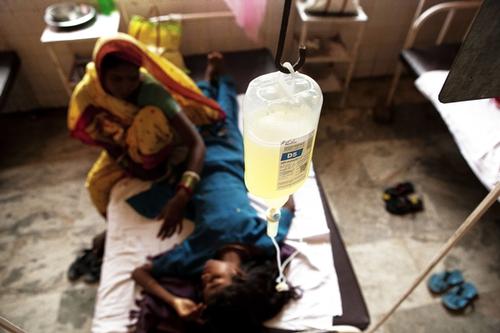Executive Summary
With more than eight million individuals worldwide now receiving antiretroviral therapy (ART), the ability to monitor and optimise treatment effectiveness is key to the success of HIV treatment programmes. Viral load testing – measuring the number of copies of HIV in the blood – is the only way to accurately assess the level of viral replication in HIV-positive patients. Routine monitoring of viral load will help to reinforce a patient’s adherence to ART alongside counselling and support, thereby ensuring viral suppression and preventing treatment failure before it occurs. Routine testing also ensures that health-care workers can diagnose treatment failure early on when drug resistance occurs, and appropriately switch patients from first-line ART to more effective second-line treatment regimens. With large numbers of patients in Africa already having been on treatment for several years, ensuring patients can access viral load testing is emerging as a global priority. Furthermore, for treatment as prevention to be successful, viral load monitoring will be a critical component.
For patients on ART, the World Health Organization (WHO) recommends viral load testing twice yearly in settings where testing is available. Unfortunately, viral load testing remains largely unavailable in resource-limited settings, in which the majority of HIV-positive patients reside. Instead of being an important routine monitoring and patient support tool in these contexts – as it is in resource-rich countries – viral load testing is rarely available, and where it is, its use is limited to confirming treatment failure. The result is avoidable morbidity and mortality among patients, and the potential transmission of drug-resistant forms of the virus.
It is critical, therefore, that access to viral load testing in resource-limited settings is prioritised as part of the next phase in the fight against HIV/AIDS. Poor access to viral load testing to date is a result of current test complexity, requiring specialised laboratory facilities. The majority of HIV-positive patients globally live in remote settings served by districtlevel laboratories that may be without reliable access to a power supply or highly trained staff, and where transport of samples to central reference laboratories causes delays. Poor access is also due to the fact that tests are costly. A lack of market competition to date means prices remain high. Ultimately, viral load testing prices will have to come down, as well as the cost of second- and third-line ART. Simple tests that can be performed at a community-based level using district laboratories, and/or a point-of-care test that can be performed at point of service, are now urgently needed.





